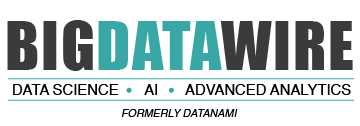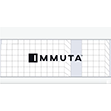
Why Embedded Analytics Are the Foundation of a Successful Application

(ZinetroN/Shutterstock)
Is your application starting to become irrelevant?
Or, put another way, is your application focusing only on facilitating the transactional parts of the customer interaction process while missing an opportunity to also provide critical insights? Because if your application is, it’s losing value. Sure, transactional tasks are getting automated, say sales or inventory management. A transactional report is getting generated. But is the business task itself getting done better or faster?
Embedding a layer of analytics into your existing application, on the other hand, is a pathway to delivering better results rather than just statistics because in-app analytics is a conduit to better decision-making.
Data analysis is no longer the sole domain of a few highly trained technical people. Today, amid the rise of data discovery, making the most of analytics falls on business leaders and other users as much as IT teams. Everyone is expected to be aware of their business domain data to make the right business decisions.
Application teams are now expected to simplify the difficult tasks of data preparation and visualization. Gleaning insight from near-real-time data, visualizations, interactive reports and other capabilities allow application teams to stay ahead of the curve on what’s needed next.
Embedded analytics are the foundation of successful application optimization. Here’s a closer look at how they can save time, increase productivity, lead to innovation and serve customers better.
Centralizing and Automating Analytics to Save Valuable Time
With an analytics layer embedded in your application workflow, you can centralize and automate analytics and reporting processes in near-real time.
Say your organization has dozens of locations, each generating dozens of business metrics, whether data on sales, staffing, inventory or numerous other factors. The data is invaluable. Finding actionable insights, however, might be insufferable without an in-app analytics solution that aggregates and reports the data in a consistent way across locations.
Otherwise, how much time would employees spend gathering the data? How much time would managers or IT teams spend generating reports? Siloed reporting models incur significant development time and restrict the sharing of data that users need.
Automated data gathering and reporting through embedded analytics can yield insights in near-real-time. Managers, team members and members of other teams can review benchmark categories right from a mobile device.
The net result is increased productivity, real-time feedback and efficiency. Embedded Analytics enables business users to spend less time switching back and forth between business applications and analytics tools, and more time on value-added activities.
A More Detailed and Helpful Visual Understanding
Embedded analytics provide application team leaders far more insight than what, say, traditional business intelligence affords. Traditional BI leans on static, often dated reports. Embedded analytics provide more near real-time data analysis and reporting capabilities.
Tools include dashboards and data visualizations of performance metrics, interactive reports with scheduling capabilities, self-service analytics and ad hoc querying to explore user-unique inquiries, benchmarking to compare metrics against peers or other external data, and mobile reporting.
Users get frustrated when basic data analysis capabilities prevent them from aggregating their own data or creating visualizations. Embedded analytics helps application development teams to innovate faster and increase customer satisfaction. The data and insights can yield new features or new use structures and reduce development time. Superior analytics and reporting experience increase customer engagement and draw new customers.
Gaining a Competitive Edge
Application teams have access to near-real-time data to guide decision-making when expectations for turnaround times only grow tighter. With self-service abilities, they can build dashboards and reports that could be tailored by individual business users to their needs. This improves the productivity of the business users so they can spend more time on your core business aspects that set you apart from your competitors. This in turn frees up application teams to focus on new products that help grow the business and create differentiation in the marketplace.
Whether through the additional insights or time gained, embedded analytics reveal new processes and opportunities. They drive innovation.
To remain relevant, an application must do more than yield a set of results or perform a set of tasks. Such a narrow view of its function ignores myriad other opportunities that embedded analytics can reveal. An application’s goal shouldn’t just be transactional (tracking sales activity or managing inventory). The goal should be about selling better and giving a better customer experience of your products. Actionable insights layered inside of existing applications give the business user makes them productive and make better business decisions.
The choice is up to your organization. It can keep plugging along like the more than half of the respondents to an executive survey who said they were not yet treating data as a business asset. Or your organization can embrace data and give your application teams the right embedded analytics tool to take insights and decision-making to the next level, where your organization reaches a wider customer base, expands profitability and remains competitive and relevant in the marketplace.
About the Author: Vijay Pendyala is the SVP of Engineering at Logi Analytics. He has been working in the high-tech industry with a focus on enterprise software, big data analytics, artificial intelligence (AI). For over 20+ years Vijay has held senior and executive-level roles in engineering, product management, data science, and SaaS operations. As a senior leadership team (SLT) member, Vijay has direct responsibility for leading Architecture, Engineering, Data Science, DevOps, and SaaS Operations. My primary responsibilities include building high-performance teams through the software development lifecycle, growing revenue, improving operating margins, and building market-leading products.
Related Items:
Insightsoftware Loads Up on Embedded Analytics with Logi, Izenda Deals
Embedded Analytics Goes Mainstream
July 3, 2025
- FutureHouse Launches AI Platform to Accelerate Scientific Discovery
- KIOXIA AiSAQ Software Advances AI RAG with New Version of Vector Search Library
- NIH Highlights AI and Advanced Computing in New Data Science Strategic Plan
- UChicago Data Science Alum Transforms Baseball Passion into Career with Seattle Mariners
July 2, 2025
- Bright Data Launches AI Suite to Power Real-Time Web Access for Autonomous Agents
- Gartner Finds 45% of Organizations with High AI Maturity Sustain AI Projects for at Least 3 Years
- UF Highlights Role of Academic Data in Overcoming AI’s Looming Data Shortage
July 1, 2025
- Nexdata Presents Real-World Scalable AI Training Data Solutions at CVPR 2025
- IBM and DBmaestro Expand Partnership to Deliver Enterprise-Grade Database DevOps and Observability
- John Snow Labs Debuts Martlet.ai to Advance Compliance and Efficiency in HCC Coding
- HighByte Releases Industrial MCP Server for Agentic AI
- Qlik Releases Trust Score for AI in Qlik Talend Cloud
- Dresner Advisory Publishes 2025 Wisdom of Crowds Enterprise Performance Management Market Study
- Precisely Accelerates Location-Aware AI with Model Context Protocol
- MongoDB Announces Commitment to Achieve FedRAMP High and Impact Level 5 Authorizations
June 30, 2025
- Campfire Raises $35 Million Series A Led by Accel to Build the Next-Generation AI-Driven ERP
- Intel Xeon 6 Slashes Power Consumption for Nokia Core Network Customers
- Equal Opportunity Ventures Leads Investment in Manta AI to Redefine the Future of Data Science
- Tracer Protect for ChatGPT to Combat Rising Enterprise Brand Threats from AI Chatbots
June 27, 2025
- Inside the Chargeback System That Made Harvard’s Storage Sustainable
- What Are Reasoning Models and Why You Should Care
- Databricks Takes Top Spot in Gartner DSML Platform Report
- LinkedIn Introduces Northguard, Its Replacement for Kafka
- Change to Apache Iceberg Could Streamline Queries, Open Data
- Agentic AI Orchestration Layer Should be Independent, Dataiku CEO Says
- Why Snowflake Bought Crunchy Data
- Fine-Tuning LLM Performance: How Knowledge Graphs Can Help Avoid Missteps
- Top-Down or Bottom-Up Data Model Design: Which is Best?
- The Evolution of Time-Series Models: AI Leading a New Forecasting Era
- More Features…
- Mathematica Helps Crack Zodiac Killer’s Code
- ‘The Relational Model Always Wins,’ RelationalAI CEO Says
- Confluent Says ‘Au Revoir’ to Zookeeper with Launch of Confluent Platform 8.0
- DuckLake Makes a Splash in the Lakehouse Stack – But Can It Break Through?
- Solidigm Celebrates World’s Largest SSD with ‘122 Day’
- The Top Five Data Labeling Firms According to Everest Group
- Supabase’s $200M Raise Signals Big Ambitions
- Toloka Expands Data Labeling Service
- With $17M in Funding, DataBahn Pushes AI Agents to Reinvent the Enterprise Data Pipeline
- Databricks Is Making a Long-Term Play to Fix AI’s Biggest Constraint
- More News In Brief…
- Astronomer Unveils New Capabilities in Astro to Streamline Enterprise Data Orchestration
- Databricks Unveils Databricks One: A New Way to Bring AI to Every Corner of the Business
- Seagate Unveils IronWolf Pro 24TB Hard Drive for SMBs and Enterprises
- Gartner Predicts 40% of Generative AI Solutions Will Be Multimodal By 2027
- BigBear.ai And Palantir Announce Strategic Partnership
- Astronomer Introduces Astro Observe to Provide Unified Full-Stack Data Orchestration and Observability
- Databricks Donates Declarative Pipelines to Apache Spark Open Source Project
- Deloitte Survey Finds AI Use and Tech Investments Top Priorities for Private Companies in 2024
- Code.org, in Partnership with Amazon, Launches New AI Curriculum for Grades 8-12
- Databricks Announces Data Intelligence Platform for Communications
- More This Just In…



























